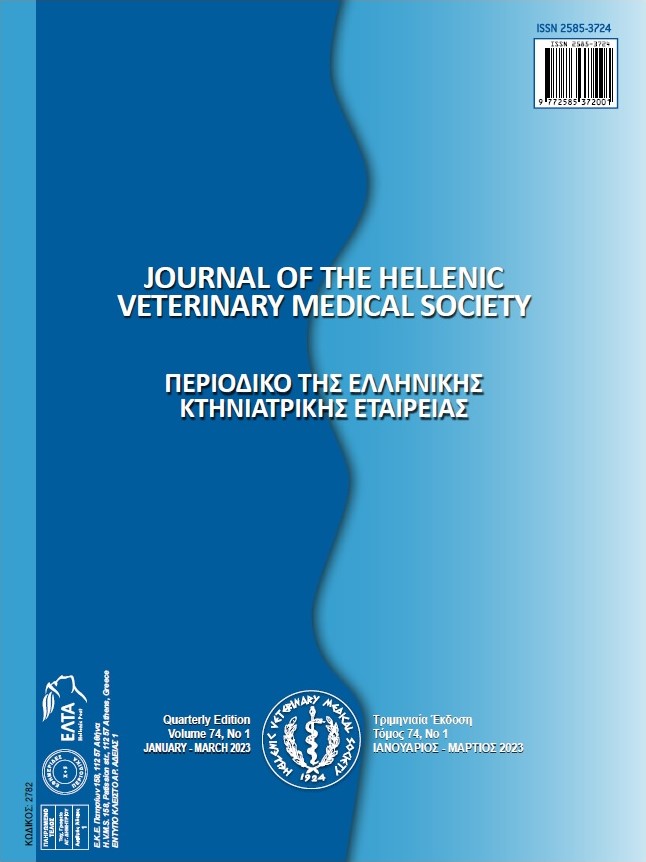Molecular Characterization of Antimicrobial Resistance of Vibrio Species Isolated from Fish in Egypt

Аннотация
Vibrio sp. are the most widely recognized and serious pathogen in fish and shellfish marine aquaculture around the world generated disease, not only to fish but also to human causing gastroenteritis. Vibriosis is a common disease caused by a number of Vibrio spp.; V. harveyi, V. parahaemolyticus, V. alginolyticus, V. anguillarum, V. vulnificus etc. Vibrio sp. are Gram negative, straight or curved short rods, non-sporulating, non-capsulated, arranged singly or in chains, motile, oxidase positive, catalase positive, citrate positive, string test positive, indol positive, urease negative, H2S negative. The current study was conducted to spot light on identification, molecular characterization and antimicrobial resistance of Vibrio sp. isolated from fish in Egypt and to detect the presence of some of β- lactams resistance genes and class 1 integron. About 52 Vibrio isolates were isolated from 150 fish (75 Oreochromus niloticus, 50 Mugil cephalus, 25 Clarias gariepinus) in Kafr El-Sheikh Governorate in Egypt. Twenty isolates of Vibrio species were tested against 11 antimicrobials for antimicrobial resistance. All the isolates were highly sensitive (100%) to ciprofloxacin and norfloxacin. V. alginolyticus showed high resistance to Ampicillin and intermediate resistance to streptomycin, cefotaxime and erythromycin. V. cholerae showed high resistance to Ampicillin and intermediate resistance to erythromycin. V. parahaemolyticus showed high resistance to gentamycin and intermediate resistance to Ampicillin. V. fluvialis showed high and intermediate resistance to Ampicillin. V. splendidus showed high resistance to Ampicillin and intermediate resistance to streptomycin and cefotaxime. Five isolates showing multidrug resistance were tested for blaTEM , blaCMY2 ,blaCTX genes and class 1 integron. The genes blaTEM was detected in 100% of the isolates, while blaCMY2 and blaCTX genes were detected in 0% of the isolates. Class 1 integron was detected with a percentage of (100%) in the 5 examined isolates. A class 1 integrons bearing streptomycin/ spectinomycin resistant gene cassette of aadA2 were discovered on V. parahaemolyticus isolate. As there is a little reports about antibiotic resistance in Vibrio, this study highlight on the incidence of some of β-lactams resistance genes and class 1 integrons in Vibrio species.
Article Details
- Как цитировать
-
Gobarah, D., Helmy, S., Mahfouz, N., Fahmy, H., Abou Zeid, M., & Moustafa , E. (2023). Molecular Characterization of Antimicrobial Resistance of Vibrio Species Isolated from Fish in Egypt. Journal of the Hellenic Veterinary Medical Society, 74(1), 5101–5110. https://doi.org/10.12681/jhvms.24078
- Выпуск
- Том 74 № 1 (2023)
- Раздел
- Research Articles

Это произведение доступно по лицензии Creative Commons «Attribution-NonCommercial» («Атрибуция — Некоммерческое использование») 4.0 Всемирная.
Authors who publish with this journal agree to the following terms:
· Authors retain copyright and grant the journal right of first publication with the work simultaneously licensed under a Creative Commons Attribution Non-Commercial License that allows others to share the work with an acknowledgement of the work's authorship and initial publication in this journal.
· Authors are able to enter into separate, additional contractual arrangements for the non-exclusive distribution of the journal's published version of the work (e.g. post it to an institutional repository or publish it in a book), with an acknowledgement of its initial publication in this journal.
· Authors are permitted and encouraged to post their work online (preferably in institutional repositories or on their website) prior to and during the submission process, as it can lead to productive exchanges, as well as earlier and greater citation of published work.


